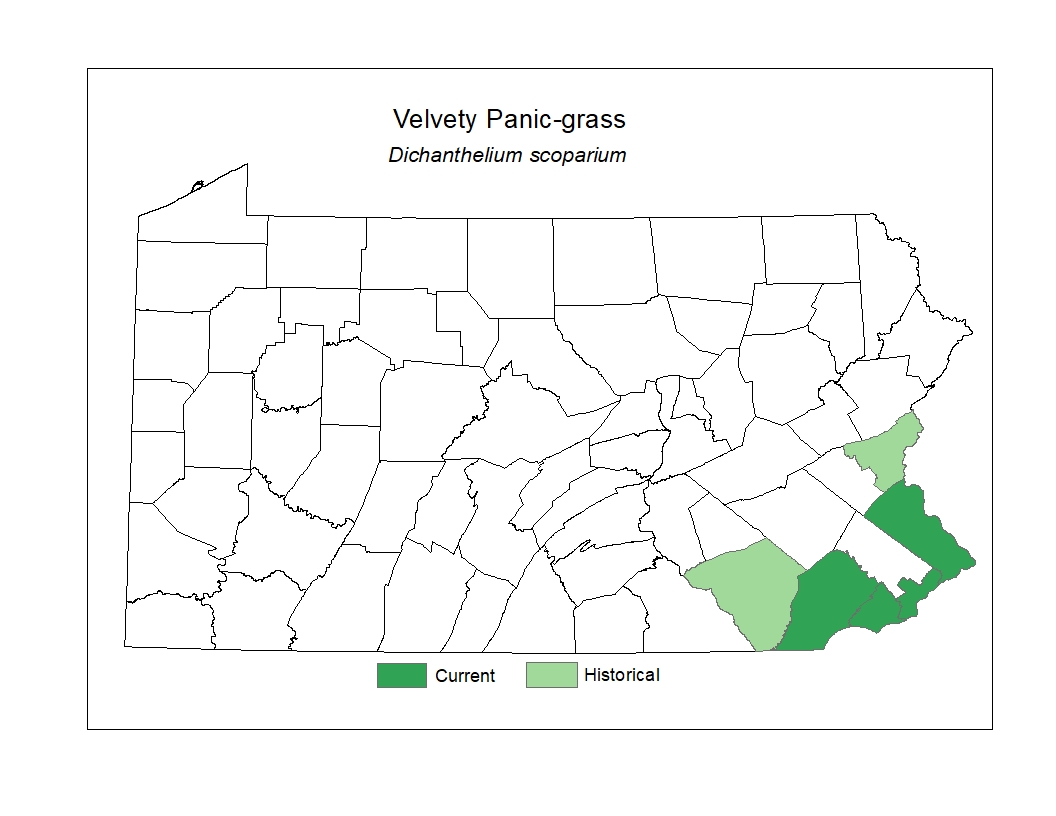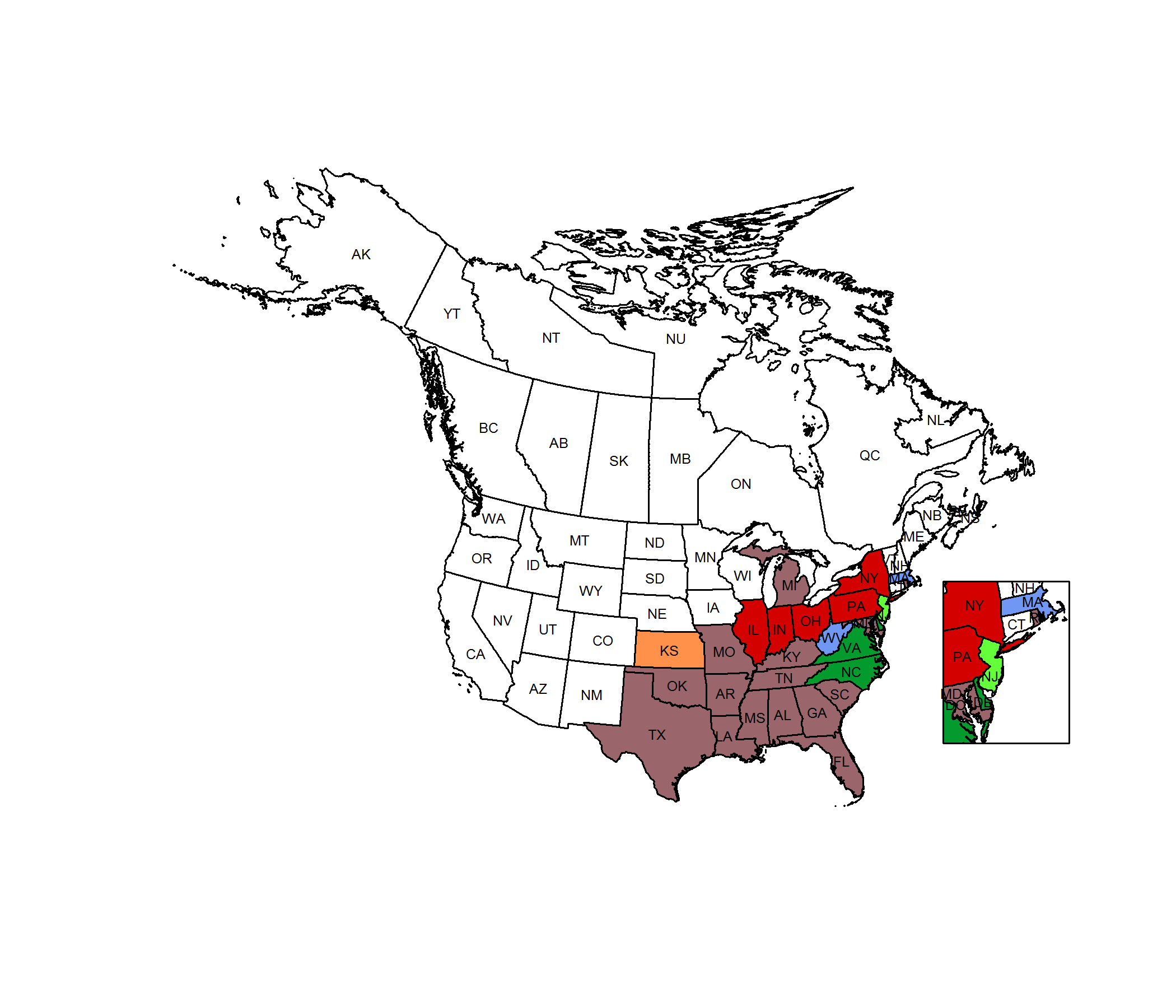 Species Factsheets
Species Factsheets
Dichanthelium scoparium
Velvety Panic Grass
State Status: Pennsylvania Endangered (PE)
PBS Status: Pennsylvania Endangered (PE)
Federal Status:
Global Rank: G5
![]() rank interpretation
rank interpretation
State Rank: S1
Did You Know?
The name for this species comes from a Greek word meaning two-flowering; the plant has two flowering periodsin the spring and late summer.
Description
Velvety panic grass (Dichanthelium scoparium) is a perennial herb that may grow up to 1.5m in height. The stems are covered with short, soft, dense, spreading hairs that give the species its name. The portion of the stem just below each node or joint usually has a ring that is sticky to the touch.The leaf blades are alternately arranged, lance-shaped, with parallel veins, not toothed on the margin, and covered with the same sort of hairs as the stem. The flowers, appearing from June to October, are individually only a few millimeters in length and are arranged in clusters that are found at the top of the stem and its branches. Of the many species of panic-grass in the Pennsylvania, this one can be recognized by the velvety hairs on the stems and leaves.
Rank Justification
Critically imperiled in the nation or state because of extreme rarity (often 5 or fewer occurrences) or because of some factor(s) such as very steep declines making it especially vulnerable to extirpation from the state.
PABS
The PA Biological Survey (PABS) has assigned velvety panic grass a rarity status of Endangered, based on the limited number of populations documented for the species and its small state range. Recent field surveys have been successful in discovering more populations of the species, so this rarity status may be amended to reflect a lesser degree conservation significance.
Habitat
Velvety panic grass grows in damp to seasonally wet clearings, abandoned fields, marshes, and disturbed ground.
Survey Dates
Vernal terminal panicles May - early July, or late summer or early fall
Distribution
In Pennsylvania, it represents a southerly species, and has been documented in a few southeastern counties.

Threats
Some of the known populations of velvety panic-grass have threats from habitat loss, competition, and exotic species.
Conservation Status Map


NatureServe. 2017. NatureServe Explorer: An online encyclopedia of life [web application]. Version 7.1. NatureServe, Arlington, Virginia. Available https://explorer.natureserve.org.
https://www.acris.nynhp.org/guide.php?id=9737
- NatureServe. 2018. NatureServe Explorer: An online encyclopedia of life [web application]. Version 7.1. NatureServe, Arlington, Virginia. Available at https://www.natureserve.org/explorer
- Pennsylvania Natural Heritage Program. 2018.
- Rhoads, A.F. and W.M. Klein, Jr. 1993. The Vascular Flora of Pennsylvania. American Philosophical Society, Philadelphia, Pennsylvania. Rhoads, A.F. and T.A. Block.
- 2007. The Plants of Pennsylvania: An Illustrated Manual. 2nd edition. University of Pennsylvania Press, Philadelphia, Pennsylvania.







